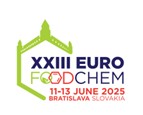Scientific journal
Journal of Food and Nutrition Research
Summary No. 3 / 2009
DRAHOVSKÁ, H. – TÓTHOVÁ, Ľ. – SZEMEŠ, T. – AL-ALAMI, H. – BROTANOVÁ, D. – ŠOLTYSOVÁ, A. – TURŇA, J.
Multiple-locus variable-number tandem repeat analysis for discrimination of Salmonella enterica strains belonging to different serovars
Journal of Food and Nutrition Research, 48, 2009, No. 3, s. 153-160
Hana Drahovská, Department of Molecular Biology, Faculty of Natural Sciences, Comenius University, Mlynská dolina, pavilion B-2, SK – 842 15 Bratislava 4, Slovakia. E-mail: drahovska@fns.uniba.sk
Summary: Seven variable-number tandem repeat (VNTR) markers, which had previously proven to be suitable for typing of Salmonella enterica serovar Typhimurium or S. enterica serovar Enteritidis, were evaluated for their discrimination power in multilocus VNTR analysis (MLVA) on a panel of 83 S. enterica strains belonging to 23 different serovars, which had been isolated from food and animal samples. Strains varied not only in numbers of tandem repeats, but also in the presence or absence of VNTR alleles. The greatest polymorphism was observed in STTR5, STTR3 and STTR7 loci. Based on combined allelic profiles of all seven VNTR loci, it was possible to distinguish as many as 50 different MLVA profiles. The MLVA clustering of strains parallelled serotyping results to a reasonable extent. In addition, a high degree of intra-serovar variability was observed in strains of serovars Bareilly, Bredeney, Dublin, Enteritidis, Havana, Saintpaul, Senftenberg, Schwarzengrund and Typhimurium. MLVA proved to be more discriminative than dnaN housekeeping gene sequencing. The optimized MLVA method can be advantageously used in tracing of Salmonella contamination of food products.
Keywords: Salmonella; genotyping; tandem repeat; food borne pathogens; DNA; PCR
Download:
(pdf, 756.23 Kb, 1383x)










